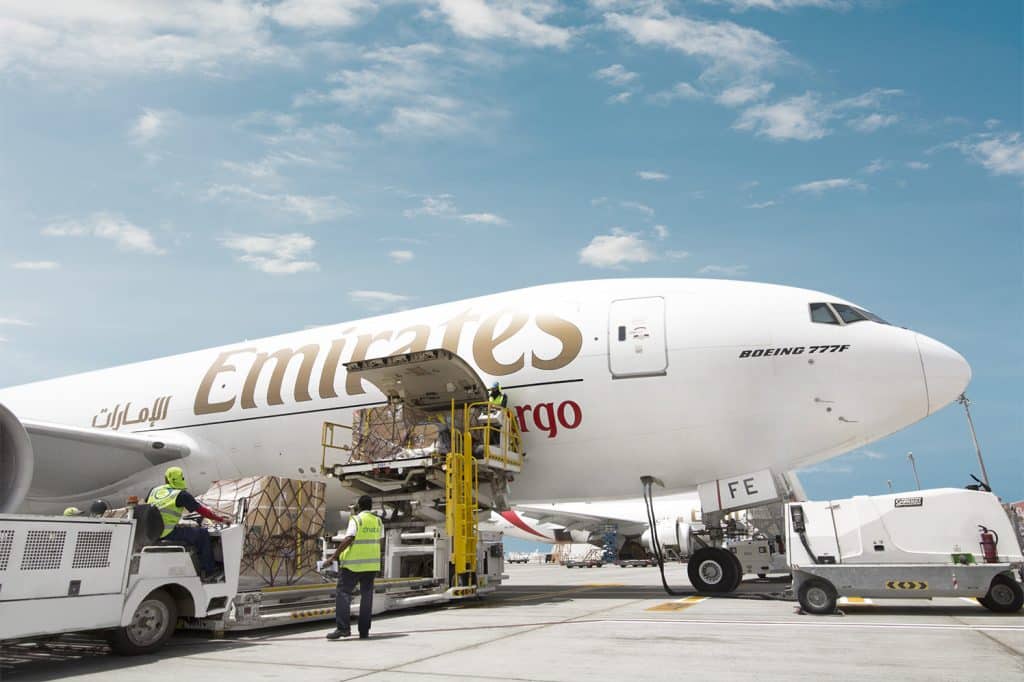The global air cargo market is showcasing remarkable resilience, as demand increased by 4.1% in August 2025, according to the latest data from the International Air Transport Association (IATA), released on Tuesday, September 30. This consistent growth marks the sixth consecutive month of year-on-year gains, highlighting the sector’s adaptability in a rapidly changing global landscape. Air cargo has particularly benefitted from a strategic shift in shipping preferences, moving from sea freight to air for specific high-value goods. This shift is largely driven by shippers’ efforts to minimize potential risks associated with fluctuating tariffs and geopolitical uncertainties.
Willie Walsh, IATA’s Director General, emphasized the importance of adaptability for shippers: “As global trade patterns evolve, the air cargo sector’s flexibility is crucial in navigating the complexities of U.S. tariff policies.” The ongoing transformation in trade routes has resulted in a diversification of demand, with significant growth observed in the Europe–Asia, Africa–Asia, and Middle East–Asia trade lanes, while some volumes are being diverted away from traditionally strong regions like North America.
In July 2025, global goods trade registered a healthy 4% year-on-year growth. Jet fuel prices reflected a favorable trend in August, standing 6.4% lower than the previous year, marking the fourteenth straight month of declining prices. This reduction can help alleviate operational costs for carriers. In terms of manufacturing sentiment, global manufacturing conditions showed rising optimism in August, as indicated by the Manufacturing Purchasing Managers’ Index (PMI), which rebounded to 51.75, marking the strongest reading since June 2024. Despite this optimism, caution remains prominent, particularly concerning new export orders, with the relevant index below the neutral mark at 48.73, primarily driven by lingering uncertainties around tariff policies.

Regional Performance in August 2025
– Asia-Pacific: Airlines in this region experienced a substantial year-on-year air cargo demand growth of 9.8% in August, buoyed by increased consumer demand and supply chain recovery efforts. Capacity also increased significantly by 6.9%, indicating a robust response to rising demand.
– North America: In contrast, North American carriers faced a year-on-year decrease of 2.1%, the slowest growth rate across all regions, attributed to ongoing economic challenges and shifts in trade routes. Capacity declined by 1.0%, reflecting a cautious approach to growth amidst market uncertainties.
– Europe: European carriers reported a modest year-on-year increase of 3.2% in air cargo demand, driven by strong exports and the resumption of travel logistics. Furthermore, capacity increased by 4.2%, providing a robust complement to rising demand.
– Middle East: Airlines in the Middle East had a year-on-year demand increase of 2.7%, aided by strategic investments in infrastructure and expanding trade relationships, with capacity growing by 4.3%.
– Latin America: Carriers in Latin America experienced a year-on-year increase of 2.1% in air cargo demand, supported by a rejuvenating economy and a 5.0% rise in capacity, which reflects the region’s efforts to boost trade connectivity.
– Africa: African airlines demonstrated the strongest growth of all regions, achieving an impressive year-on-year increase of 11.0% in air cargo demand. This substantial rise can be attributed to enhanced trade relationships and infrastructural improvements, with capacity increasing by 12.3%.
In August 2025, air freight volumes surged significantly across most major trade corridors. Both the Europe–Asia and Within Asia routes posted double-digit growth, indicating strong regional trade dynamics. Furthermore, the North America–Europe and Africa–Asia routes saw notable gains, reflecting growing demand for cross-continental trade. However, certain corridors experienced declines, such as Asia–North America, Middle East–Europe, and Within Europe, signaling shifts in trading patterns.
Here’s a detailed overview of specific trade corridor performances for August:
– Asia-North America: -2.2% (marking four consecutive months of decline due to ongoing shifts in supply chains)
– Europe-Asia:+13.0% (maintaining 30 consecutive months of growth, driven by high-value goods exports)
– Middle East-Europe: -0.8% (one month of decline, affected by geopolitical tensions)
– Middle East-Asia: +7.8% (demonstrating six consecutive months of growth, fueled by increasing regional trade)
– Within Asia: +12.4% (evidence of 22 consecutive months of growth, supported by robust intra-regional demand)
– Within Europe: -0.9% (one month of decline, impacted by local economic conditions)
– North America-Europe: +7.8% (continuing 19 consecutive months of growth, reflecting strong trade partnerships)
– Africa-Asia: +8.4% (with two consecutive months of growth, driven by rising trade volumes and market expansion)


